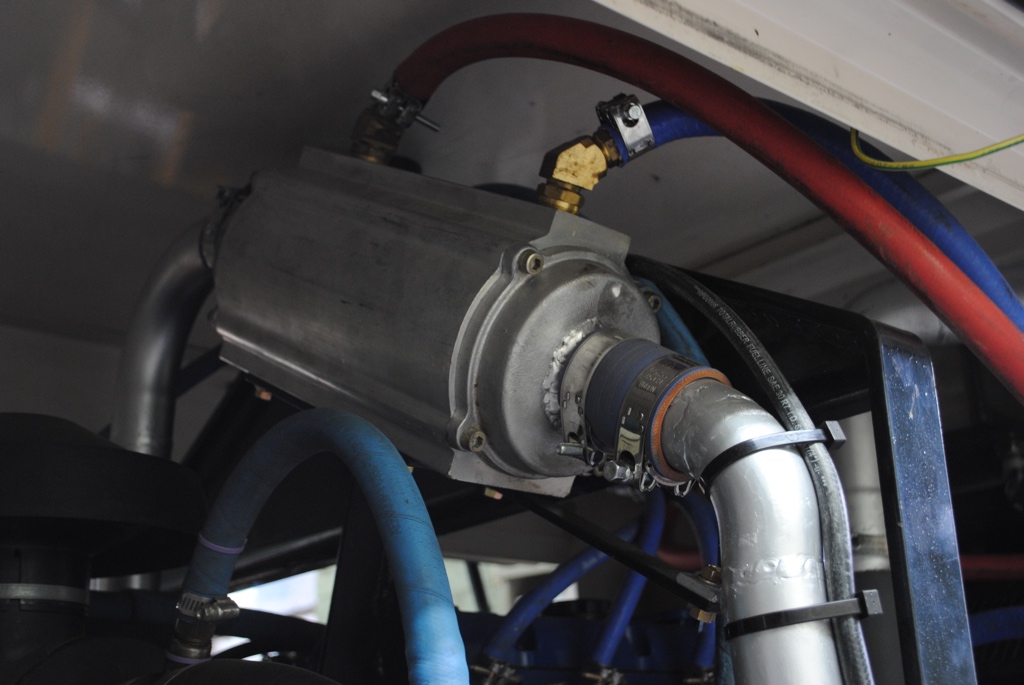The Bennett Clayton Story
Bennett Clayton’s first project was a happenstance meeting at the airport. Marcus Clayton explains…
“Before we had licenses to drive (circa 1960), ones inspiration came from the books of the time. “The Motor” was a reflection of cars of the day, mostly British, a bit of French and a tiny bit of Italian. I even attempted to rebuild a Side Valve 1949 Fiat Topolino which was my first wheels, I recall the difficulties of obtaining garage services to ream kingpin bushes. Oh Dear! Eventually, with inspiration from both Popular Mechanics and Automobile Years depictions of the “state of the art” in engines and family cars, my education shifted to a fitting and turning apprenticeship in a machine tool works and seizing on the ability to transform metal into engine parts.”
From early days of “fiddling with engines” through formal training and nearly a decade of learning and gaining experience in engine design, modification and remanufacturing John Bennett went into business establishing Head Mod Engineering, a specialised cylinder head service that quickly grew to 50 employees repairing cars, trucks, engines and some manufacturing of performance components for the auto makers.
Head Mod Engineering processed almost 20,000 heads and several thousand engines over the seven years. A feature of this enterprise was constant activity on dynamometers, duty rating commercial engines (mainly LPG powered) and race engines for touring cars of the day – successes included national championships.
Business sold in 1973 and continued developments on engines and chassis design, focussed on motorcycle engines with extremely high output and successful in competitions over several years.
Racing
During the late 70’s and early 80’s, John’s main focus was on developing and building race engines for cars and motorcycles with notable successes in rally, road and speedway races.
Detail Products of Australia (DPA) did commission work on racing engines for many of the big names including Allan Moffat.
Development was severely curtailed when a fire totally destroyed the factory but not before John’s motorcycle engines had made quite an impression such as Dennis Skinner’s outfit unbeaten 33 times in arrow – Victorian Championships and TT’s; South Australia TT’s; Phillip Island Grand Prix and Oran Park doubles. Even the Tasmanian Speedway Championships.
John then established a laboratory in rural Victoria and in between developing and building specialty engines for private clients, commenced work on utilising out of service diesel engine cores as basis for commercial LPG engines. Work on methanol and ethanol engines followed.
The Brazilian connection
John was invited to Brazil to work on that country’s developing ethanol program with a particular brief on developing commercial heavy duty ethanol engines.
Under John’s direction, BMW’s former rally racing workshop started producing a range of innovative ethanol engines. This in turn led to collaboration with the Lyon Institute in France, a centre of excellence in engineering with a strong reputation for innovation and excellence in design.
John spent several years commuting between lecture theatres in France and development workshops in Brazil until he returned to Australia in 1987 to re-establish engine laboratories in Campbellfield. The work that followed focused on diesel technologies including duty rating of engines for military applications.
John was recruited to manage REPCO’s Goldstar Engine Reconditioning Plant. Producing 100 engines per day, – Managed 100 engine per day re-manufacturing plant – for just over a year (Melbourne).
ECOTRANS – to Diesel Refurbishment and LPG Evolution
Diesel engine re-conditioning in service is a fact of life and may be done many times. However the intricacy of the fuel injection system and associated costs of new components invariably leads to neglect and the fuel consumption for a given task deteriorates as the engines 2nd (or 3rd!) life is run.
In many countries this syndrome is repeated as new technology engines or vehicles are not affordable.
So the smoke and smells of the transport fleets of the 3rd world are literally fumigating whole cities and their surrounds. This can be avoided by changing the re-manufacture build spec to delete the diesel fuelling system and equip the engine so that the vehicle can be run with spark/ignition – LPG is the alternative fuel of choice due to the simplicity of the fuelling system.
Ecotrans began serious demonstrations of converted diesels in the early 1990’s using LPG automix, propane and butane fuelling and was achieving equivalent power-torque characteristics to original diesel engine specs, with no visible smoke or smells.
Subsequent analysis of regulated emissions and BSFC confirmed the conversion method would stand the commercial test as LPG (per kj) was becoming cheaper in the marketplace – on road certified.
Subsequent developments on the test bed led to the incorporation of a decompression plate (patented) to simulate a combustion chamber below the valves, consistent with most automotive spark ignited engines.
Around this time, John Bennett started collaborating with Marcus Clayton, a self confessed petrol head, RAAF trained electronics engineer specialising in robotics and automation of industrial manufacturing processes.
A series of conversion projects followed: MAN SL200 bus; Isuzu truck; Mercedes Benz truck, and others.
Given the positive reception and potential for these developments, John and Marcus formally joined to form Bennett Clayton Pty. Ltd. Focusing on the commercialisation of the technology.




